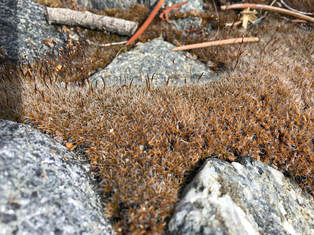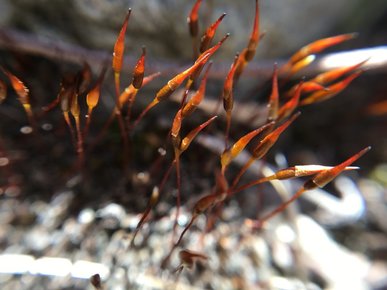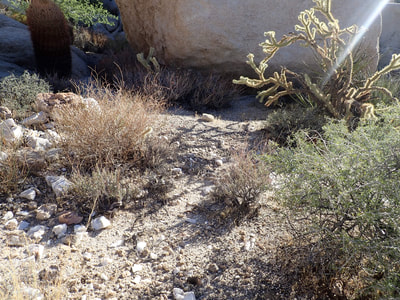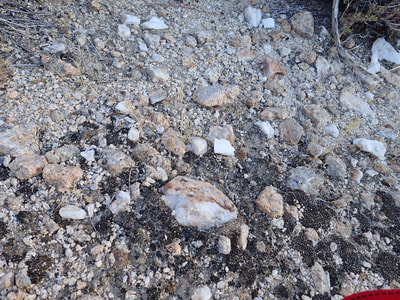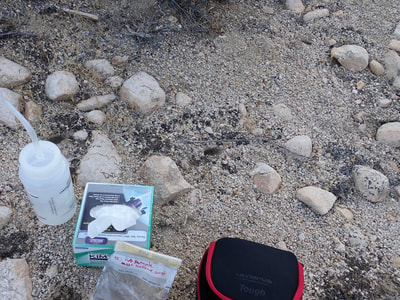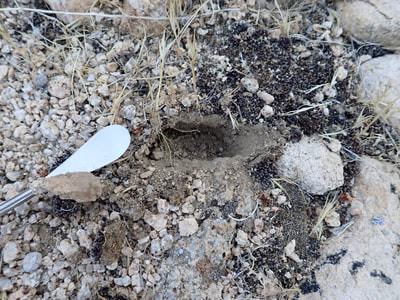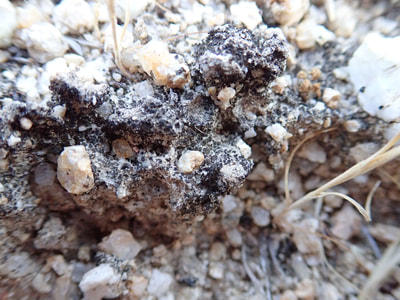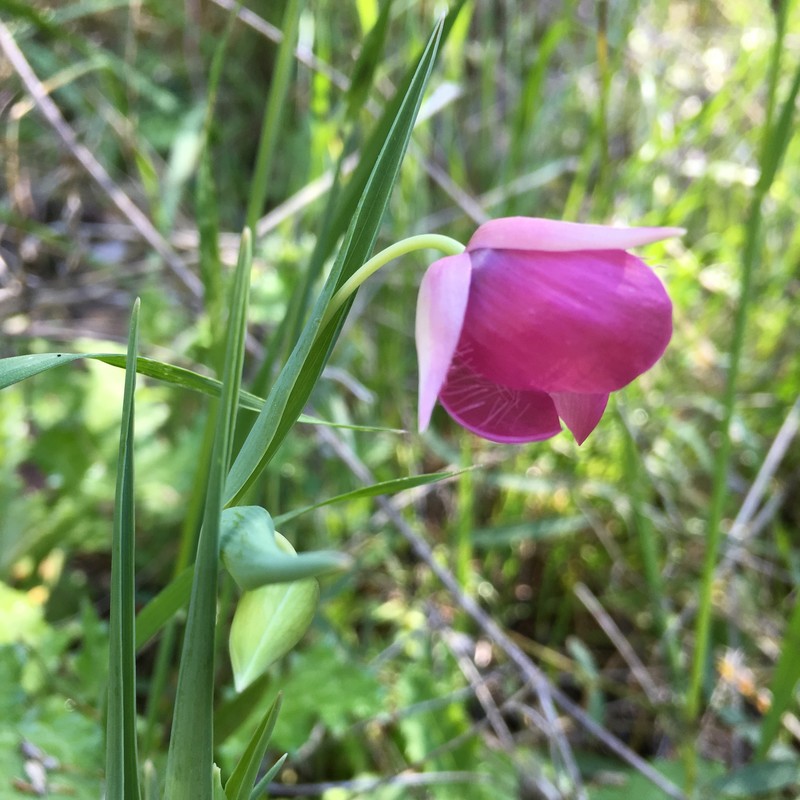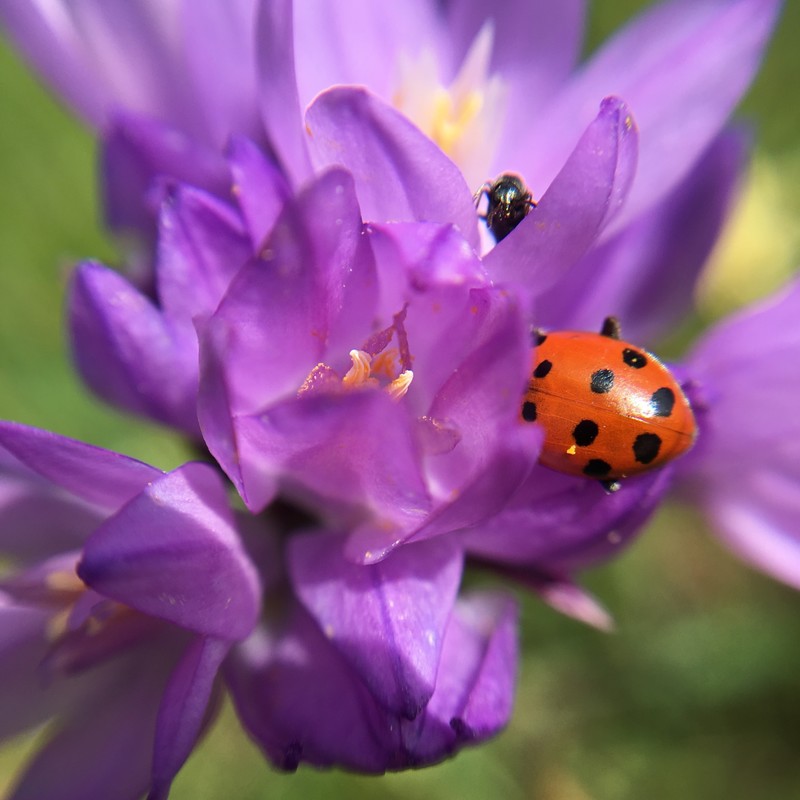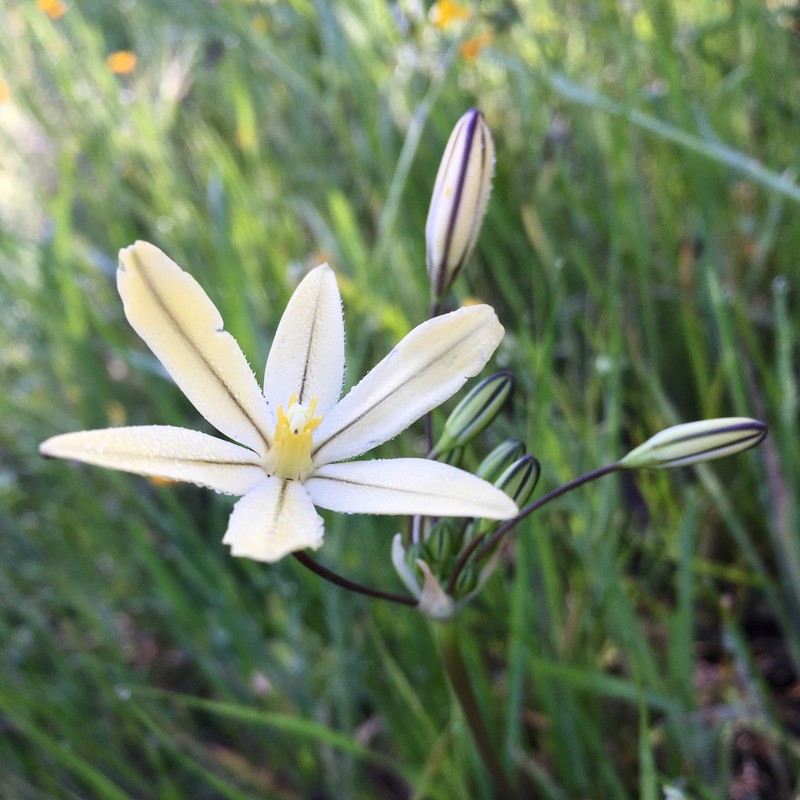|
|
Spatial Genetic Structure and Distribution of the Sexes Across Environmental Gradients Much of our lab’s current work focuses on the desert moss species, Syntrichia caninervis. As a moss, it is essentially an aquatic plant species that persists in desert environments by maintaining the energetically costly trait of desiccation tolerance, and its opportunities for acquiring energy via photosynthesis are restricted to relatively brief interludes of hydration during cooler winter months. This limited window of opportunity for metabolism establishes tight constraints on energy allocation within the life history of this species, which provides an interesting context for investigating the impact of environmental stress on population characteristics such as clonality and sex ratios. Our work on this system spans several scales. At very small spatial scales, we are interested in characterizing the microhabitat associations of male and female S. caninervis plants within populations. At a slightly broader scale, we are comparing the degree of clonality in males and females and the overall genetic diversity across populations along several elevation gradients, which represent varying macro-climates (e.g., higher temperature and drought stress at lower elevations). At the most inclusive geographic scale, we are investigating overall patterns of differentiation, migration, and sex ratio variation across populations of S. caninervis in western North America. This project is one component of a larger collaborative NSF Dimensions of Biodiversity project, Desiccation and Diversity in Dryland Moss (3D Moss), a multi-level investigation of the genus Syntrichia that integrates physiological, population genetic, genomic, phylogenetic, and community scale studies to answer questions such as:
You can find out more about this project and the contributing research labs here: https://3dmoss.berkeley.edu/ |
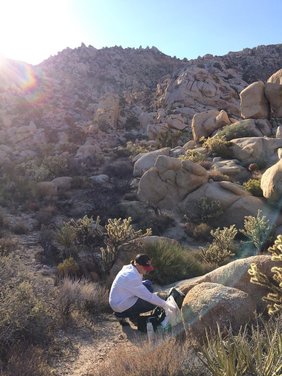 Collecting biocrust samples. Granite Mts. Reserve, Aug. 2018.
Collecting biocrust samples. Granite Mts. Reserve, Aug. 2018.
Microbial Community Composition in Surface and Hypolithic Biocrusts
Syntrichia is notable among moss groups in that it has diversified extensively in arid environments. Several Syntrichia species, including S. caninervis, are important members of the desert soil biological crust (biocrust) community. Biocrusts are complex assemblages of bryophytes, lichens, fungi, cyanobacteria, and other microorganisms living on the surface of the soil in deserts and drylands, and are important for maintaining ecosystem function. Biocrust mosses contribute to soil stability and soil formation, and may provide a nutrient enriched habitat for microorganisms. A new project in our lab involves metagenomic sequencing of microbial community DNA from a variety of biocrust environments, including hypolithic microenvironments under semi-opaque quartz rocks. Hypolithic biocrust communities are typically dominated by cyanobacteria, but biocrust mosses such as Syntrichia caninervis also inhabit hypolothic spaces, potentially altering microbial community composition and function in these unique microhabitats. To date, we lack comparative information about how microbial community diversity and multifunctionality may vary between surface and hypolithic biocrusts or between moss- and cyanobacteria-dominated bioctrusts. Using metagenomic sequence data, we will characterize microbial diversity (which includes bacteria, archaea, and eukaryotes), and functional potential, and will identify genes and pathways related to the development of different biocrust communities.
Syntrichia is notable among moss groups in that it has diversified extensively in arid environments. Several Syntrichia species, including S. caninervis, are important members of the desert soil biological crust (biocrust) community. Biocrusts are complex assemblages of bryophytes, lichens, fungi, cyanobacteria, and other microorganisms living on the surface of the soil in deserts and drylands, and are important for maintaining ecosystem function. Biocrust mosses contribute to soil stability and soil formation, and may provide a nutrient enriched habitat for microorganisms. A new project in our lab involves metagenomic sequencing of microbial community DNA from a variety of biocrust environments, including hypolithic microenvironments under semi-opaque quartz rocks. Hypolithic biocrust communities are typically dominated by cyanobacteria, but biocrust mosses such as Syntrichia caninervis also inhabit hypolothic spaces, potentially altering microbial community composition and function in these unique microhabitats. To date, we lack comparative information about how microbial community diversity and multifunctionality may vary between surface and hypolithic biocrusts or between moss- and cyanobacteria-dominated bioctrusts. Using metagenomic sequence data, we will characterize microbial diversity (which includes bacteria, archaea, and eukaryotes), and functional potential, and will identify genes and pathways related to the development of different biocrust communities.
Sweeny Granite Mts. Reserve, Mojave Desert, CA, Aug. 2018.
Capturing California’s Flowers: CSULA Herbarium Digitization
We are currently participating in a project to digitize the Cal State LA Herbarium’s plant collection as part of a California-wide collaboration to understand the effects of climate change on flowering time. This project, called Capturing California’s Flowers, will produce nearly 1 million digital images of plant specimens housed in 22 California herbaria. These plant records go back almost 200 years and have data about when and where the plant specimen was collected. This project will capture the time and place of each collection as well as data about the flowering and fruiting condition of each specimen. We will use this information to compare historical and current flowering time trends. All of the images and data will be made available to the public via a new online database.
The Herbarium at Cal State LA (CSULA) contains about 35,000 plant specimens, which are used in teaching and research. The specimens emphasize holdings from the Mojave Desert, Peninsular Ranges, and Los Angeles Basin, and will provide a long-term reference of the plants of Southern California and beyond. Through this project, we are in the process of photographing and databasing all the CSLA specimens, and we will collect flower and fruit data from a subset of families that are highly diverse in California or contain many species that are not found outside the state.
We have already taken thousands of high-resolution photographs of the CSLA collections, and are currently enlisting the help of the community to transcribe the information contained in specimen labels. Anyone with an internet connection can help out in this effort – if you’d like to help, please visit our Notes from Nature Expedition:
https://www.zooniverse.org/projects/md68135/notes-from-nature-capturing-californias-flowers
This project is driven by undergraduate researchers: if you are interested in participating, please contact us to learn more!
We are currently participating in a project to digitize the Cal State LA Herbarium’s plant collection as part of a California-wide collaboration to understand the effects of climate change on flowering time. This project, called Capturing California’s Flowers, will produce nearly 1 million digital images of plant specimens housed in 22 California herbaria. These plant records go back almost 200 years and have data about when and where the plant specimen was collected. This project will capture the time and place of each collection as well as data about the flowering and fruiting condition of each specimen. We will use this information to compare historical and current flowering time trends. All of the images and data will be made available to the public via a new online database.
The Herbarium at Cal State LA (CSULA) contains about 35,000 plant specimens, which are used in teaching and research. The specimens emphasize holdings from the Mojave Desert, Peninsular Ranges, and Los Angeles Basin, and will provide a long-term reference of the plants of Southern California and beyond. Through this project, we are in the process of photographing and databasing all the CSLA specimens, and we will collect flower and fruit data from a subset of families that are highly diverse in California or contain many species that are not found outside the state.
We have already taken thousands of high-resolution photographs of the CSLA collections, and are currently enlisting the help of the community to transcribe the information contained in specimen labels. Anyone with an internet connection can help out in this effort – if you’d like to help, please visit our Notes from Nature Expedition:
https://www.zooniverse.org/projects/md68135/notes-from-nature-capturing-californias-flowers
This project is driven by undergraduate researchers: if you are interested in participating, please contact us to learn more!
Photos of CA native geophytes – Sequoia National Park.
For more information on the California Phenology Thematic Collections Network (CAP-TCN), visit: https://www.capturingcaliforniasflowers.org/
